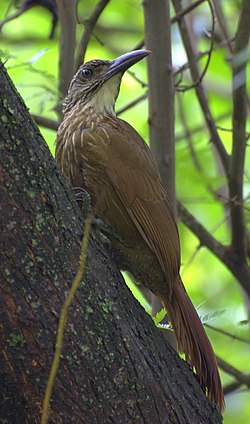| Xiphocolaptes | |
|---|---|
 | |
| White-throated woodcreeper (Xiphocolaptes albicollis) | |
| Scientific classification | |
| Kingdom: | Animalia |
| Phylum: | Chordata |
| Class: | Aves |
| Order: | Passeriformes |
| Family: | Furnariidae |
| Subfamily: | Dendrocolaptinae |
| Genus: | Xiphocolaptes Lesson, 1840 |
| Type species | |
| Dendrocopus albicollis [1] Vieillot, 1818 | |
| Species | |
see text | |
Xiphocolaptes is a genus of bird in the Dendrocolaptinae subfamily.




